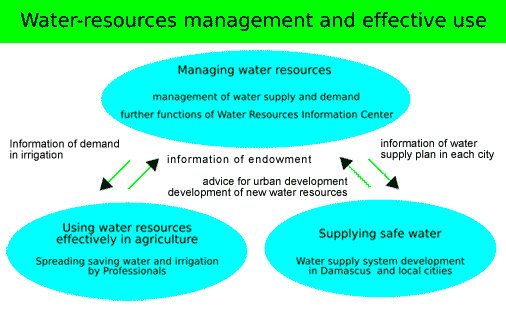Water Resources Development Plan – Agriculture Notes – For W.B.C.S. Examination.
Water resource management plays a vital role in sustainable development of watershed which is possible only through the implementation of various water harvesting technique.Continue Reading Water Resources Development Plan – Agriculture Notes – For W.B.C.S. Examination.
The efficient way for sub-surface water storage, soil moisture conservation or ground water recharge technologies should be adopted properly under water resource development plan.
The various measures adopted under soil and water harvesting is:
(a) Vegetative barriers
(b) Building of contour bunds along contours for erosion
(c) Furrow/Ridges and Furrow ridge method of cultivation across the slope.
(d) Irrigation water management through drip and sprinkler methods.
(e) Planting of horticultural contour species on bunds.
Watershed Management Programmes:
(i) Drought Prone Area Programme (DPAP):
Year of start: 1970-71
Objectives: Area development programme through restoration of ecological balance and optimum utilization of land, water, livestock and human resources to mitigate the effect of drought.
(ii) Desert Development Programme (DDP):
Year of start: 1977-78
Objectives: Mitigate the effect of drought in the desert area and restore ecological balance.
(iii) National Watershed Development Programme for Rainfed Agriculture (NWDPRA):
Year of start: 1986-87
Objectives: To conserve and utilize rain water from both arable and non arable lands on watershed basis. To increase the productivity of crops and to increase the fuel, fodder and fruit resources through appropriate alternate land use system.
(iv) Control of Shifting Cultivation:
Year of start: 1986-87
Objectives: Restoring ecological balance in hilly areas and improving socioeconomic conditions.
(v) World Bank Assisted Integrated Watershed Development Project:
Year of start: 1990
Objectives: To arrest the problems of environmental degradation and promote sustainable increase in agriculture production and to enhance vegetative technology of soil and water conservation for rain water conservation and for increasing crop, forage, fuel wood and timber yield of the area.
Watershed Management Practices:
A. In Terms of Purpose
(i) To increase infiltration
(ii) To increase water holding capacity
(iii) To prevent soil erosion
B. Method and Accomplishment:
(i) Vegetative measures/Agronomical measures:
(a) Strip cropping
(b) Pasture cropping
(c) Grass land farming
(d) Woodlands
(ii) Engineering measures/Structural practices:
(a) Contour bunding
(b) Terracing
(c) Construction of earthen embankment
(d) Construction of check dams
(e) Construction of farm ponds
(f) Construction of diversion
(g) Gully controlling structure
(h) Rock dam
(i) Establishment of permanent grass and vegetation
(j) Providing vegetative and stone barriers
Rainwater Harvesting:
Rainwater harvesting means collection and storage of rainwater by some mechanism to make water available for future use. An appreciable amount of precipitation, which is generally lost as surface flow, can be harvested and stored for useful purposes like drinking and providing supplemental irrigation to the crops.
Please subscribe here to get all future updates on this post/page/category/website


 Toll Free 1800 572 9282
Toll Free 1800 572 9282  mailus@wbcsmadeeasy.in
mailus@wbcsmadeeasy.in



















































































































